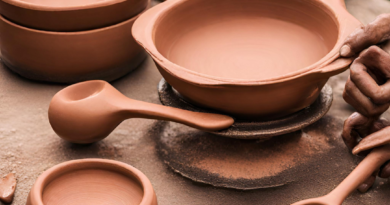How do you prevent food from sticking to the bottom of a clay pot?
Preventing food from sticking to the bottom of a clay pot, especially unglazed clay cookware, requires proper seasoning, preheating, and cooking techniques. Here are steps you can take to prevent sticking:
1. Season the Clay Pot
Before using an unglazed clay pot for the first time, it’s essential to season it. Seasoning helps create a non-stick surface and enhances the pot’s natural properties. To season, soak the pot in water for several hours or overnight. Then, coat the interior with a thin layer of vegetable oil or melted lard. Place the pot in a cool oven and gradually heat it to a low temperature (about 225°F or 107°C) for several hours. Let it cool, and your pot is ready for use.
2. Preheat the Clay Pot
Always preheat your clay pot before adding ingredients. This helps to evenly distribute heat and reduces the likelihood of food sticking. Place the empty clay pot in a cold oven, then turn the oven on to the desired cooking temperature. Allow both the pot and the oven to heat up together.
3. Use Adequate Fat
When cooking, use enough fat or oil to coat the bottom of the clay pot. This helps create a protective layer between the food and the pot’s surface. You can also add a small amount of fat to the ingredients before placing them in the pot.
4. Avoid High Heat
Clay pots are best used over low to medium heat settings. High heat can cause the food to stick and may lead to thermal shock, which can damage the pot. Slow and steady cooking is ideal for clay pots.
5. Stir or Rotate
During cooking, stir or rotate the ingredients gently to ensure even cooking and prevent sticking. Frequent stirring can also help release any food that might start to stick to the bottom.
6. Add Liquid
If you notice that the food is starting to stick, you can add a small amount of liquid, such as broth, wine, or water, to the pot. This can help deglaze the bottom and prevent further sticking.
7. Use Appropriate Utensils
When stirring or serving food in a clay pot, use utensils that won’t scratch the pot’s surface. Wooden or silicone utensils are gentle on clay cookware.
8. Be Patient
Clay pots are known for slow and gentle cooking. Avoid rushing the cooking process. Allow the food to simmer and release its natural juices gradually.
9. Proper Cleaning
After cooking, let the clay pot cool down before cleaning. Gently scrub any food residue with a soft brush or sponge and warm water. Avoid using abrasive scouring pads or harsh detergents, as they can damage the clay’s surface.
10. Re-season as Needed
Over time, the seasoning of the clay pot may wear off. If you notice food sticking more frequently, it may be time to re-season the pot following the same seasoning process mentioned earlier.
By following these steps and practicing proper clay pot cooking techniques, you can enjoy the benefits of this unique cookware while minimizing the risk of food sticking to the bottom.


